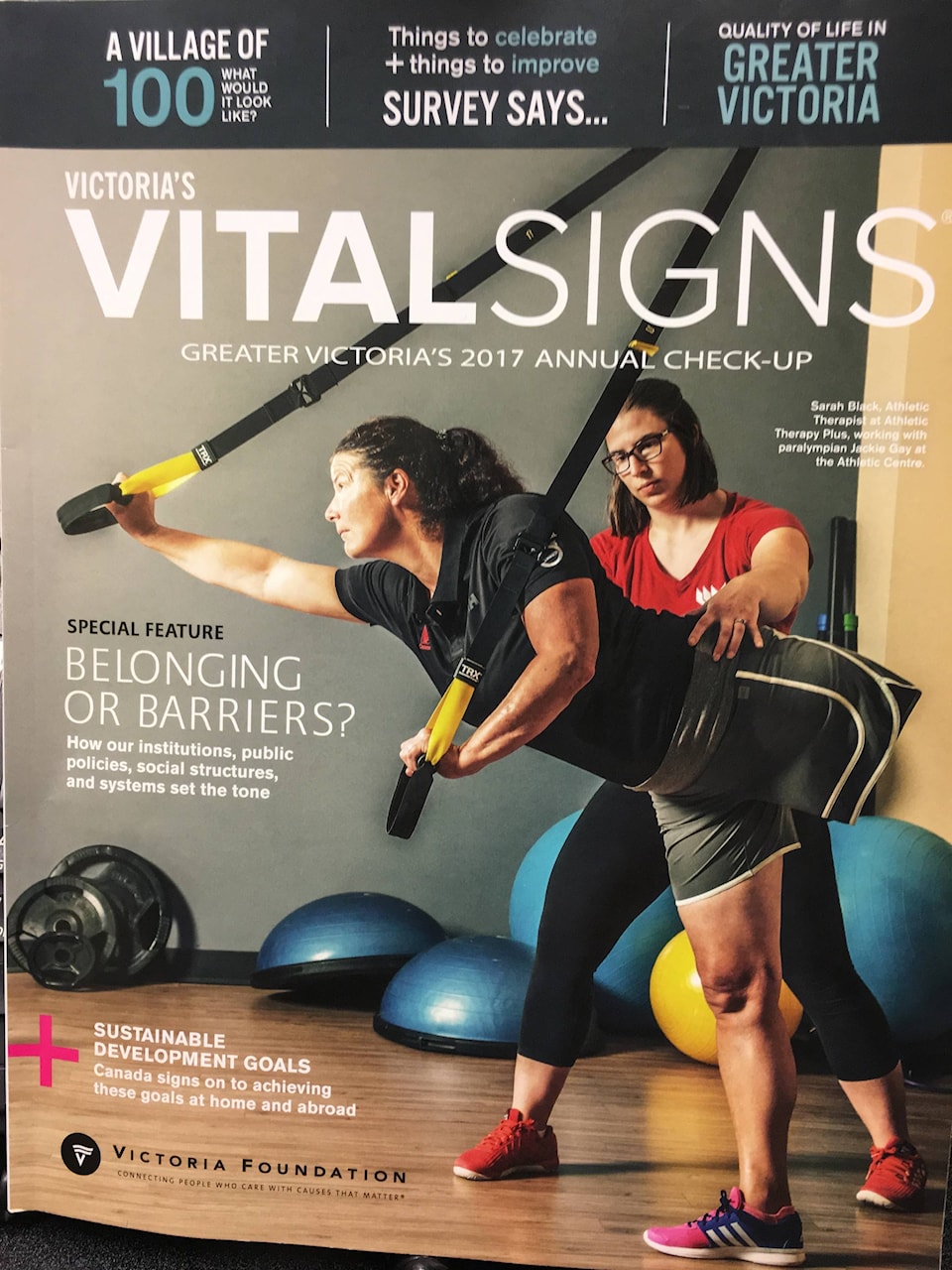The letter grade hasn’t changed on the overall health and well-being of the Greater Victoria community.
But respondents to the Victoria Foundation’s 2017 Vital Signs survey, whose collective answers to questions in 12 key issue areas kept the region’s quality of life rating at B-plus, pushed some things higher on the list of most important issues facing local citizens.
At the Vital Signs release breakfast Tuesday at the Hotel Grand Pacific, movers and shakers representing business, non-profits and government were given a glimpse of residents’ perceptions of what’s good in the region and what needs improving.
Victoria Mayor Lisa Helps was among a half dozen or so local politicians on hand. She wasn’t surprised to see housing (listed by 47.6 per cent of respondents) and cost of living (46.5 per cent) sitting at number 1 and 2 on the Most Important Issues list, followed in order by mental illness (27.2), addictions (23.4) and transportation (22.8).
“The thing that struck me the most is the number of people that feel like they don’t have a sense of belonging,” she said.
Indicators of such from the report were that less than 40 per cent of youth respondents feel connected to their community, 64 per cent felt the region is welcoming to new Canadians and just 63 per cent felt they know their neighbours well enough to ask for help.
“I think that is something that not only as a city, but as a community we need to tackle,” Helps said. “That’s something that everybody can take responsibility for. Belonging is sometimes a sense of how you feel on your street, how well you know your neighbours. It’s a simple knock on the neighbour’s door to say, ‘hey we’ve never met, I live next door, come over for tea.’ It’s that simple, and for whatever reason, maybe social media, online life, we don’t just do that we’re not outside.”
A presentation by Berkeley, Calif.-based planner Christopher Beynon entitled The Inclusive City illustrated how growth and economic prosperity in urban areas can leave many residents on the outside looking in, financially and culturally.
While he witnessed more vibrancy and construction happening in Victoria since his last visit three years ago, he said that measure of success can’t be enough. “Just like the Victoria Foundation is doing, you need to be taking care of those who can’t take care of themselves. You need to be thinking of empowering people with greater education, greater levels of income, more connectedness to the community and to the world.”
While acknowledging the importance of housing and cost of living as areas of concern, foundation CEO Sandra Richardson was interested to see arts and culture move from 10th to fourth on the Best Things About Greater Victoria list, and recreational opportunities added to that list.
“We rely on the community to tell us what they perceive and what they think we should work on, then we get busy to find the actual data that either supports their thoughts or dismisses perceptions,” she said.
In general, she said the Vital Signs report is used by people in various areas of local influence, from non-profits to local politicians, as well by people from elsewhere looking to move or invest here.
Comments from local community leaders in the back of the magazine about how they use the report were perhaps the most telling she added.
“That, to me, is what is going to be one of the biggest change agents is if people really look at that and say, ‘huh, maybe there’s something we can do in this area,’” she said. “To me reading those comments really made me feel good about what we’re doing.”
Find a copy of the report online at victoriafoundation.bc.ca/vital-signs.



